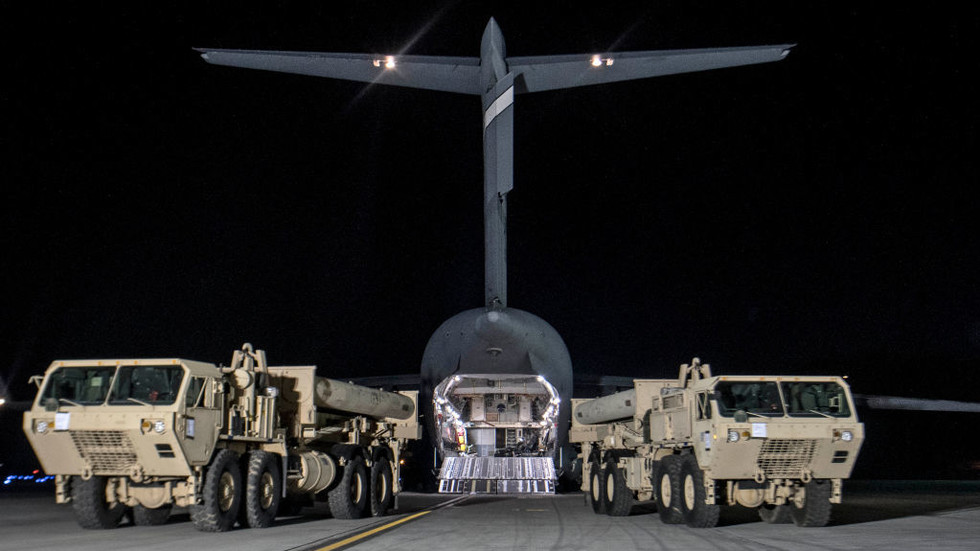In a significant escalation of military involvement in the ongoing conflict between Israel and Iran, the United States has announced the deployment of a THAAD (Terminal High Altitude Area Defense) missile defense system to Israel, accompanied by a contingent of American service members trained to operate it. Pentagon Press Secretary Major General Pat Ryder confirmed that this move marks the first deployment of U.S. combat troops on Israeli territory since the outbreak of the Israel-Hamas war, which began last year. The deployment aims to enhance Israel’s air defense capabilities in response to a series of unprecedented missile strikes from Iran targeting Israeli military sites. These strikes, notably on April 13 and October 1, heightened the urgency for defense reinforcements. President Joe Biden’s decision, despite earlier statements indicating a preference against ground troop involvement, reflects the U.S. commitment to supporting Israel amid escalating tensions in the region.
The THAAD system, which includes 95 soldiers and six mobile launchers capable of launching 48 interceptors, serves as a critical asset in intercepting and neutralizing incoming ballistic threats. The system operates through advanced detection technologies that enable it to track and intercept target missiles during their descent. Past deployments have seen the THAAD system positioned in Saudi Arabia and previously in Israel during training exercises, although this is the first operational deployment amidst the current war dynamics. This decision to station American troops in Israel has raised eyebrows, considering that previous contingents engaged in humanitarian missions near Gaza but were not positioned for active combat roles on the ground.
As Israel deliberates its strategic response to Iranian provocations, intelligence suggests that possible targets may include Iranian oil and nuclear infrastructures. The rationale behind choosing these targets stems from Iran’s recent missile strike that reportedly fired around 200 projectiles at Israeli military sites, which Tehran framed as a justified retaliation following significant Iranian losses—including the assassination of prominent figures such as Hamas leader Ismail Haniyeh and Hezbollah leader Hassan Nasrallah. Despite U.S. advisories against targeting Iranian oil, Israel’s anticipated military plans could further fuel the cycle of retaliation, marking a potential escalation in the conflict.
Warnings have emerged from Iran’s leadership regarding the implications of U.S. military presence in Israel. Iranian Foreign Minister Seyed Abbas Araghchi stated that the deployment of American troops operating missile systems in Israel endangers their safety and pinpoints a potentially volatile escalation of hostilities in the region. He emphasized that Iran’s response to Israeli attacks would be proportionate and indicated a clear determination to defend Iranian interests, hinting at possible retaliations against U.S. and Israeli assets if certain thresholds of engagement are crossed.
Military analysts are closely monitoring the developments, particularly as the positioning of American forces not only serves to fortify Israel’s defense strategies but also symbolizes deeper U.S. involvement in Middle Eastern conflicts. The repercussions of this deployment could further strain relations within the region and escalate existing tensions, as regional actors may respond unpredictably to any increase in military activity. Furthermore, the potential Israeli-Iranian confrontations may result in broader implications for U.S. foreign policy and military engagements, compelling all involved parties to navigate a precarious diplomatic landscape.
The situation remains fluid, and the stakes are undeniably high as Israel prepares for various operational scenarios while maintaining vigilance against Iranian threats. Enhanced air defense capabilities through THAAD may offer immediate tactical advantages, but the complexities surrounding retaliatory actions by Iran, and the implications for U.S. troops stationed in Israel, introduce layers of unpredictability. As articulated by various military and diplomatic experts, the next moves from both Israel and Iran will be critical in determining the trajectory of the conflict and the broader ramifications for regional stability, making vigilance and strategic foresight paramount in the coming weeks.

